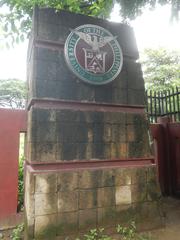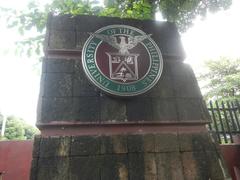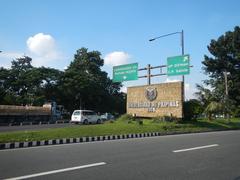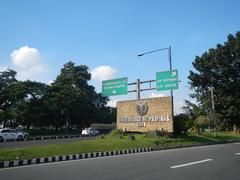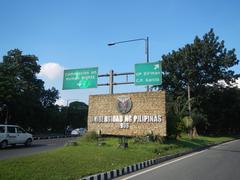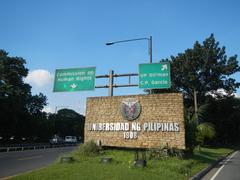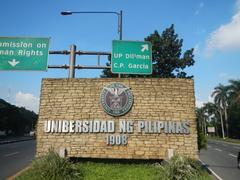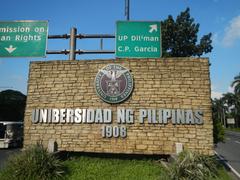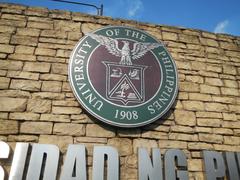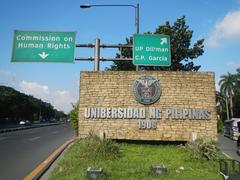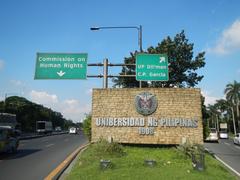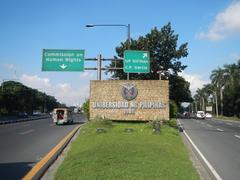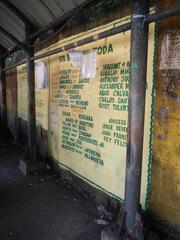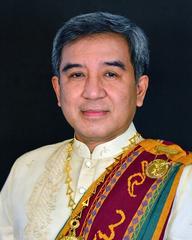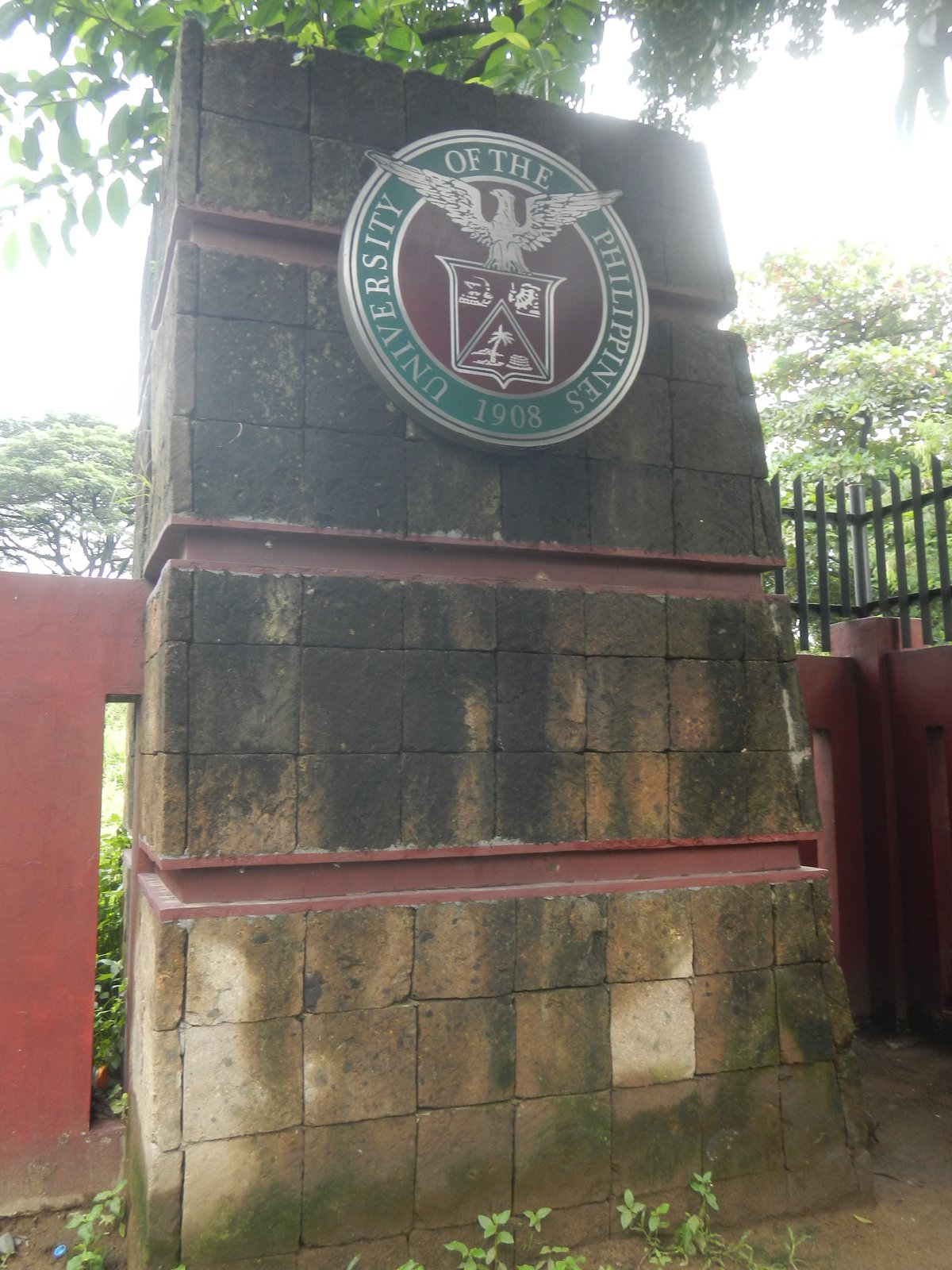
University of the Philippines Diliman Visiting Hours, Tickets, and Historical Sites Guide
Date: 14/06/2025
Introduction
The University of the Philippines Diliman (UP Diliman) stands as a beacon of academic excellence and a hub of Filipino cultural and historical heritage in Quezon City, Metro Manila. Established in 1908 and relocated to its expansive 493-hectare Diliman campus in 1949, UP Diliman has evolved into a premier educational institution and a vibrant cultural landmark. Its campus offers visitors an immersive experience—whether you’re a prospective student, history enthusiast, or casual tourist—through its iconic architecture, public art, and dynamic events such as the Lantern Parade and UP Fair. This comprehensive guide provides essential information on visiting hours, ticketing, must-see attractions, accessibility, transportation, and travel tips to help you make the most of your visit to UP Diliman (UP Diliman Overview, OICA UPD, Lakbay ng Lakan).
Table of Contents
- Introduction
- Historical Overview
- Visiting Hours and Ticket Information
- Must-See Attractions
- Accessibility and Transportation
- Food and Dining Options
- Cultural Significance and Events
- Notable Alumni and National Impact
- Frequently Asked Questions (FAQ)
- Visual and Interactive Resources
- Travel Tips and Planning
- References
Historical Overview: From Manila to Quezon City
UP was founded in 1908 in Ermita, Manila, as the country’s premier state university, offering advanced instruction in literature, philosophy, sciences, and the arts (Lakbay ng Lakan). After World War II, UP moved to the then-budding Diliman district, with the campus officially opening in 1949. The move allowed UP Diliman to expand its academic and cultural reach, transforming it into a dynamic center for both scholarship and public engagement (OICA UPD).
Visiting Hours and Ticket Information
- General Campus Hours: 6:00 AM to 8:00 PM daily.
- Museum & Building Hours: Most museums and administrative buildings are open Monday–Friday, 8:00 AM to 5:00 PM. Some, like the Vargas Museum, operate Tuesday–Sunday, 9:00 AM to 5:00 PM.
- Entrance Fees: General campus access is free. Select museums, special exhibitions, or events may charge a nominal fee.
- Guided Tours: Can be arranged through the university’s information office or the Office for Initiatives in Culture and the Arts (OICA) (UP Diliman Overview).
Must-See Attractions at UP Diliman
1. University Avenue and Oblation Plaza
The University Avenue is a grand, tree-lined entrance featuring sculptures that represent the diversity of Filipino heritage (Lakbay ng Lakan). At its end stands the iconic Oblation Statue—the university’s enduring symbol of selfless service, created by National Artist Guillermo Tolentino (UPD History).
2. Quezon Hall
A heritage structure and the administrative heart of the university, Quezon Hall is named after President Manuel L. Quezon. Its classic architectural design and central plaza make it a focal point for campus activities.
3. Academic Oval
This 2.2-kilometer loop encircles the campus core, shaded by mature acacia trees and frequented by joggers, cyclists, and students. It encompasses key sites such as the Main Library (Gonzalez Hall), Sunken Garden, and UP Lagoon (Primer Academic Oval).
4. Sunken Garden
A vast, grassy depression at the center of the Academic Oval, the Sunken Garden is a favorite venue for the UP Fair, sports tournaments, and student gatherings. Its unique landscape is a remnant of American colonial-era construction (Philippine Beaches).
5. Vargas Museum and Filipiniana Research Center
Located on Roxas Avenue, the Vargas Museum is home to an extensive collection of Filipino art, rare books, and memorabilia. It hosts regular exhibitions and cultural events (Spot.ph).
6. Parish of the Holy Sacrifice
A circular church and National Historical Landmark, the Parish features murals and sculptures by National Artists, including Leandro Locsin and Napoleon Abueva (Spot.ph).
7. Other Notable Sites
- UP Lagoon: A tranquil area for nature walks and relaxation.
- UP Theater and Carillon Plaza: Venues for concerts and public events.
- Gonzalez Hall (Main Library): Architectural gem and research hub.
- Cine Adarna: Screenings of independent and international films.
- National Science Complex: Center for scientific research and innovation.
Accessibility and Transportation
UP Diliman is accessible via major roads such as Commonwealth and Katipunan Avenue. The campus is pedestrian- and bike-friendly, with dedicated lanes around the Academic Oval. Jeepneys (“Ikot” and “Toki”) provide public transportation within campus (The Poor Traveler), and ride-hailing services like Grab are available. There is limited parking for private vehicles.
Most outdoor paths and major buildings are wheelchair accessible; however, some older structures may have limited access. Contact the university in advance for special accessibility needs.
Food and Dining Options
UP Diliman boasts a diverse and affordable dining scene:
- Area 2 (J.P. Laurel Street): Popular for local street food and international cuisine (Philippine Beaches).
- Art Circle Café: Located in Bahay ng Alumni, offers Filipino comfort food.
- Gyud Food: Modern food park with multiple stalls.
- Canteens and Vendors: Scattered across campus, especially near Academic Oval and Palma Hall.
Cultural Significance and Events
UP Diliman is a cultural powerhouse, hosting major annual events that are open to the public:
- UP Fair (February): Music, advocacy, and food festival at Sunken Garden.
- Lantern Parade (December): Creative floats and lanterns light up the Academic Oval.
- Arts and Culture Festival (October): Concerts, theater, and visual arts.
- Foundation Day (June): Celebrations marking the university’s founding.
These events reflect UP’s legacy of activism, artistic expression, and community engagement (UP Diliman OICA Events Calendar).
Notable Alumni and National Impact
UP Diliman has produced distinguished leaders, including former Presidents Ferdinand Marcos and Elpidio Quirino, and Nobel Peace Prize laureate Maria Ressa (EduRank). Its influence extends across Philippine society in government, arts, sciences, and social movements.
Frequently Asked Questions (FAQ)
Q: Is there an entrance fee to visit UP Diliman?
A: General access is free. Select museums and events may charge a small fee.
Q: What are the campus visiting hours?
A: 6:00 AM to 8:00 PM daily. Museums/buildings may have different schedules.
Q: Are guided tours available?
A: Yes, arrange through the UP Information Office or OICA.
Q: Is the campus accessible for people with disabilities?
A: Most main paths and buildings are accessible. Contact in advance for specific needs.
Q: What is the best time to visit?
A: Dry season (December–May), and during major events like UP Fair or Lantern Parade.
Q: Are photos allowed inside museums?
A: Policies vary; generally, non-flash photography is permitted. Confirm with staff.
Visual and Interactive Resources
Enhance your visit by exploring:
- UP Diliman virtual tours
- High-quality images with descriptive alt text (e.g., “Oblation Monument at UP Diliman”, “Academic Oval jogging path”)
- Campus maps and event schedules via the UP Diliman official website
Travel Tips and Planning
- Visit during the dry season for outdoor activities and events.
- Use campus jeepneys or walk/cycle the Academic Oval for easy navigation.
- Download the Audiala app for self-guided tours and event updates.
- Respect university guidelines, especially during classes and in research facilities.
- For extended trips, explore nearby attractions like Quezon Memorial Circle and La Mesa Ecopark.
References
- Lakbay ng Lakan
- OICA UPD
- UP Diliman Overview
- Times Higher Education
- Primer Academic Oval
- UP Diliman OICA Events Calendar
- UPD History
- Philippine Beaches
- Spot.ph
- The Poor Traveler
- EduRank
